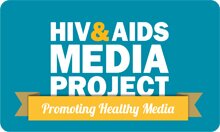Epidemic Demystified
 HIV - - - - virus
HIV - - - - virus
The Human Immunodeficiency Virus causes AIDS.
| >>>A virus is a microscopic infectious agent that needs the cells of other living organisms (hosts) to multiply. |
The HI virus enters the body and uses the CD4 positive T-cell (a vital part of a healthy immune system) to make copies of itself. In the process, the CD4 cell is destroyed. Over time the CD4 cells are depleted and the body becomes vulnerable to numerous diseases. This marks the onset of AIDS.
 AIDS - - - - syndrome
AIDS - - - - syndrome
Acquired Immune Deficiency Syndrome is the most advanced stage of HIV infection. AIDS is classified as a clinical syndrome.
| >>>A syndrome is a collection of physical symptoms / conditions that together indicate the existence of a particular disease. |
In the case of AIDS there are more than 20 conditions or AIDS-related illnesses which qualify an HIV+ person as having AIDS. A CD4 count of 200 or less is also used to diagnose AIDS.
 When writing about HIV and/or AIDS it is important not to confuse the two conditions and their characteristics. For more on how to use HIV terminology correctly see UNAIDS' 2011 Terminology Guidelines.
When writing about HIV and/or AIDS it is important not to confuse the two conditions and their characteristics. For more on how to use HIV terminology correctly see UNAIDS' 2011 Terminology Guidelines.

HIV progression can be divided into 4 stages:
| Stage | Description | Symptoms |
|
1. Primary HIV infection |
During this stage most individuals will not be aware they are infected. Symptoms normally occur within three months of infection and generally subside within two weeks. |
A flu-like illness, swollen lymph nodes, diarrhea, fever and fatigue.
|
|
2. Asymptomatic stage |
No symptoms manifest but the virus remains active. |
|
|
3. Symptomatic stage |
Individual begins to feel unwell and experiences infections caused by bacteria and viruses that surround us all daily |
Thrush, Herpes Zoster (shingles), Herpes Simplex, Oral Hairy Leukoplakia, Idiopathic Thrombocytopenic Purpura and Pneumococcal Pneumonia.
|
|
4. Acquired Immune Deficiency Syndrome (AIDS) |
Individual's CD4 count is less than 200. |
Pneumocystic Pneumonia, Kaposi's Sarcoma, Tuberculosis, HIV-Related Lymphoma...
|
Last updated: 19 September 2011






